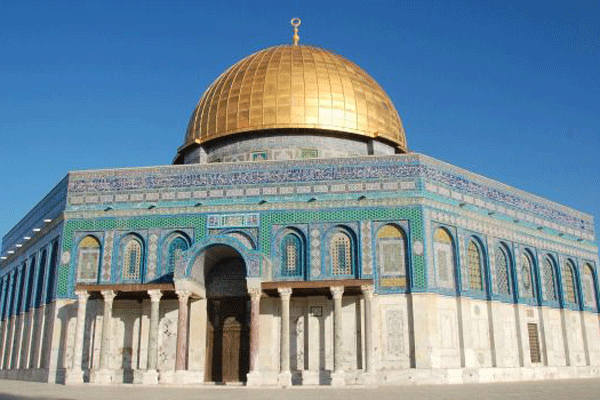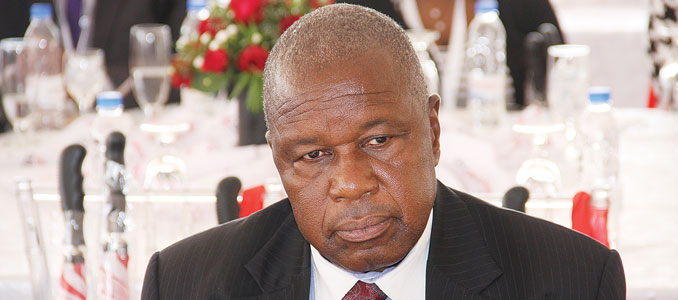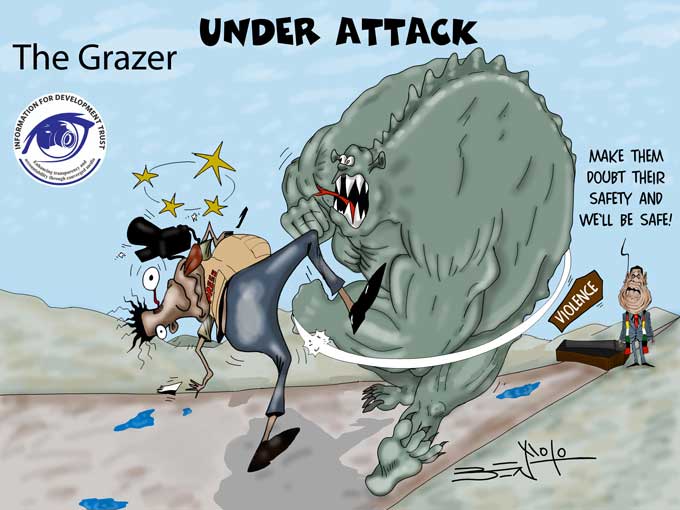
The crowning achievement of King Solomon’s reign was the erection of a magnificent temple in Jerusalem, often called Solomon’s temple or the first temple. Solomon’s father, King David, had wanted to build a great temple for God a generation earlier, as a permanent resting place for the Ark of the Covenant which contained the Ten Commandments. However, God had forbidden him from doing so: “You will not build a house for my name for you are a man of battles and have shed blood,” (1 Chronicles 28:3). Then Solomon began to build the house of the Lord in Jerusalem on Mount Moriah, where the Lord had appeared to his father David (2 Chronicles 3:1). This new, stationary temple would replace the portable tabernacle constructed during the wilderness wandering.
hebrewscriptures with benjamin leon
If Solomon reigned from 970 to 930 BC, then he began building the temple in 966 BC. A very interesting fact concerning the building of the temple was there was no noise of the construction. The material was prepared before it was brought to the building site. The temple, while it was being built, was built of stone prepared at the quarry, and there was neither hammer nor axe nor any iron tool heard in the house while it was being built (1 Kings 6:7). The Bible’s description of Solomon’s temple suggests that the inside ceiling was 180 feet long, 90 feet wide, and 50 feet high. The highest point on the temple that King Solomon built was actually 120 cubits tall (about 20 stories or about 207 feet). 1 Kings 6:1-38 and chapters 7-8 describe the construction and dedication of Solomon’s temple.
Until the first temple was destroyed by the Babylonians some 400 years later, in 586 BC, sacrifice was the predominant mode of divine service there. Seventy years later, a second temple was completed on the same site, and sacrifices again resumed. The book of Ezra chronicles the building of the second temple. During the first century, Herod greatly enlarged and expanded this temple, which became known as Herod’s temple. It was destroyed by the Romans in AD 70, during the siege of Jerusalem. Only a small portion of the retaining wall remains to this day, known as “The Wailing Wall”.
When Rome destroyed the Second Temple in 70 CE, only one outer wall remained standing. The Romans probably would have destroyed that wall as well, but it must have seemed too insignificant to them; it was not even part of the temple itself, just an outer wall surrounding the Temple Mount. For the Jews, however, this remnant of what was the most sacred building in the Jewish world quickly became the holiest spot in Jewish life. Throughout the centuries, Jews from throughout the world made the difficult pilgrimage to Palestine, and immediately headed for the Kotel ha-Ma’aravi (the Western Wall) to thank God. The prayers offered at the Kotel were so heartfelt that gentiles began calling the site the “Wailing Wall.” This undignified name never won a wide following among traditional Jews; the term “Wailing Wall” is not used in Hebrew.
The Western Wall was subjected to far worse than semantic indignities. During the more than 1 000 years Jerusalem was under Muslim rule, the Arabs often used the wall as a garbage dump, so as to humiliate the Jews who visited it.
For 19 years, from 1948 to 1967, the Kotel was under Jordanian rule. Although the Jordanians had signed an armistice agreement in 1949 guaranteeing Jews the right to visit the wall, not one Israeli Jew was ever permitted to do so. One of the first to reach the Kotel in the 1967 Six-Day War was Israeli defense minister Moshe Dayan, who helped revive a traditional Jewish custom by inserting a written petition into its cracks. It was later revealed that Dayan’s prayer was that a lasting peace “descend upon the House of Israel.”
The custom of inserting written prayers into the Kotel’s cracks is so widespread that some American-Jewish newspapers carry advertisements for services that insert such prayers on behalf of sick Jews. The mystical qualities associated with the Kotel are underscored in a popular Israeli song, a refrain of which runs: “There are people with hearts of stone, and stones with hearts of people.” A rabbi in Jerusalem once told me that the Hebrew expression “The walls have ears” was originally said about the Western Wall.
- Chamisa under fire over US$120K donation
- Mavhunga puts DeMbare into Chibuku quarterfinals
- Pension funds bet on Cabora Bassa oilfields
- Councils defy govt fire tender directive
Keep Reading
Unfortunately, even a symbol as unifying as the Kotel can become a source of controversy in Jewish life. Ultra-Orthodox Jews have long opposed organised women’s prayer services at the Wall; prayer services they maintain, may only be conducted by males. On occasion they have violently dispersed such services, throwing chairs and other “missiles” at the praying women. Under intense public pressure, however, the right of women to pray collectively at the Kotel is gradually being won.
In addition to the large crowds that come to pray at the Kotel on Friday evenings, it is also a common gathering place on all Jewish holidays, particularly on the fast of Tisha Be-Av, which commemorates the destruction of both Temples. Today the Wall is a national symbol, and the opening or closing ceremonies of many Jewish events, including secular ones, are conducted there.
On January 31 2016, the Israeli government approved the creation of an “egalitarian” prayer space where non-Orthodox Jewish men and women can pray together at the Western Wall. This decision was met with praise from Jewish leaders across the globe, and opposition from Orthodox and ultra-Orthodox Israeli citizens and members of the government. Israeli prime minister Benjamin Netanyahu stated that the creation of this space was a “fair and creative solution,” to rising tensions at the site.
Benjamin Leon is a member of the Jewish Community in Zimbabwe. Feedback: vleon@mango.zw










